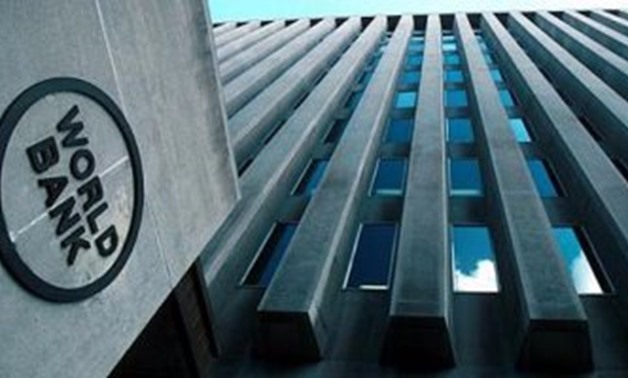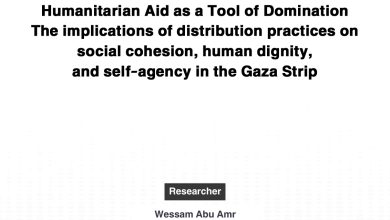Articles and StudiesNew releases
The World Bank Report on the Palestinian Economy Predicts Difficult Conditions on 2019-2020

By Omar Shaban
The World Bank will present its report on the Palestinian economy at the donor’s conference scheduled at the end of this month in April 2019 in the Belgian capital Brussels. The report looks at difficult indicators of the Palestinian economic situation. The followings is a summary of the report:-
- The Palestinian economy did not make any “real growth” in 2018, while the Gaza economy shrinking by about 7% , the West Bank economy grew at low performance of less than 1%. While the population increase has reached 3%, thus curbing the ability of the Palestinian Authority to provide the necessary services due to the increase in the population
- The report focuses on the very negative effects of Israeli policy on preventing or restricting the entry of dual-use goods into the Palestinian territories and not only to the Gaza Strip. The report reviews the impact of this policy on the Palestinian economic sectors, including medicine, dairy and food industries, chemical industries, technology industries and others.
- The report calls on the Israeli government to ease restrictions on dual-use goods used by the Israeli government in the West Bank and Gaza Strip. If the restrictions are relaxed, the West Bank economy will grow by 6% and by a larger percentage in the Gaza Strip to 11% in 2025, the report says.
- The average unemployment rate in the Palestinian Territory is 31%, 2.4% higher than in 2017. In the West Bank it is 17%, while the unemployment rate among working age in Gaza is 52% in 2018, while it was 44% in 2017. Unemployment among graduates in the Gaza Strip is the highest in the world, reaching 68% in general and 76% among female graduates.
- 46% of the population of the Gaza Strip live below the poverty line, estimated at $ 5 and half a day, while in the West Bank it is 9%.
- The report warns of a widening of the funding gap of the PA budget from $ 400 million in 2018 to more than $ 1 billion in 2019. The warning came following recent Israeli measures to deduct $ 138 million from Palestinian clearing funds collected by Israel on behalf of the Authority, Economic development. And the Palestinian Authority refused to accept the remaining tax funds in protest.
- Clearance transfers account contributes by 65% to the total revenues of the Palestinian Authority and 15% of the total Palestinian national product .
- The Palestinian Authority succeeded in reducing the public expenditure bill by 8% in 2018 compared to the previous year and the salary bill by 16%, mainly because, “the report says,” to reduce the salaries of the Authority’s employees in the Gaza Strip and the termination of the contracts of thousands of them. According to the Palestinian Ministry of Finance, the number of public sector employees has decreased by 23,500, with 500 in the northern governorates and 23,000 in Gaza governorates.
- The expected rate of real growth in the West Bank will not exceed 1% in the coming years (2019-2021), which is too low to meet the needs of population growth and demand for employment. Unemployment and poverty rates are expected to rise.
- The banking sector in Palestine continues to achieve profits despite the poor economic conditions, with assets in this sector reaching 15 billion dollars. Lending-deposit ratios are around 50%, most of which go to commercial facilities and real estate, and a small proportion go to the industrial and other productive sectors.
- The National Bank’s debts to banks amounted to $ 1.5 billion and employees’ indebtedness to banks is $ 2.8 billion, which means that the combined debt of both countries is $ 4.3 billion in 2018, representing 38% of the total bank facilities granted.
- International aid to the Palestinian authority reached $ 718 million in 2017 (US$ 543 million from Arab countries ) and international donors decreased to $ 676 million in 2018 (Arab support share of $ 516 million). Saudi Arabia is the largest Arab donor by $ 92 million in 2017, its contribution rose to $ 222 million in 2018. The World Bank’s contribution reached 76 million in 2017 and decreased to 10 million in 2018.
The report presents a pessimistic picture of the prospects of the Palestinian economy with the continuation of Israeli measures and President Trump’s policy towards the PA and UNRWA and the cessation of its projects in the Palestinian territories, as well as the decline of some Western and Arab funding without forgetting the continued negative impact of the Palestinian division on the economic and social situation.




